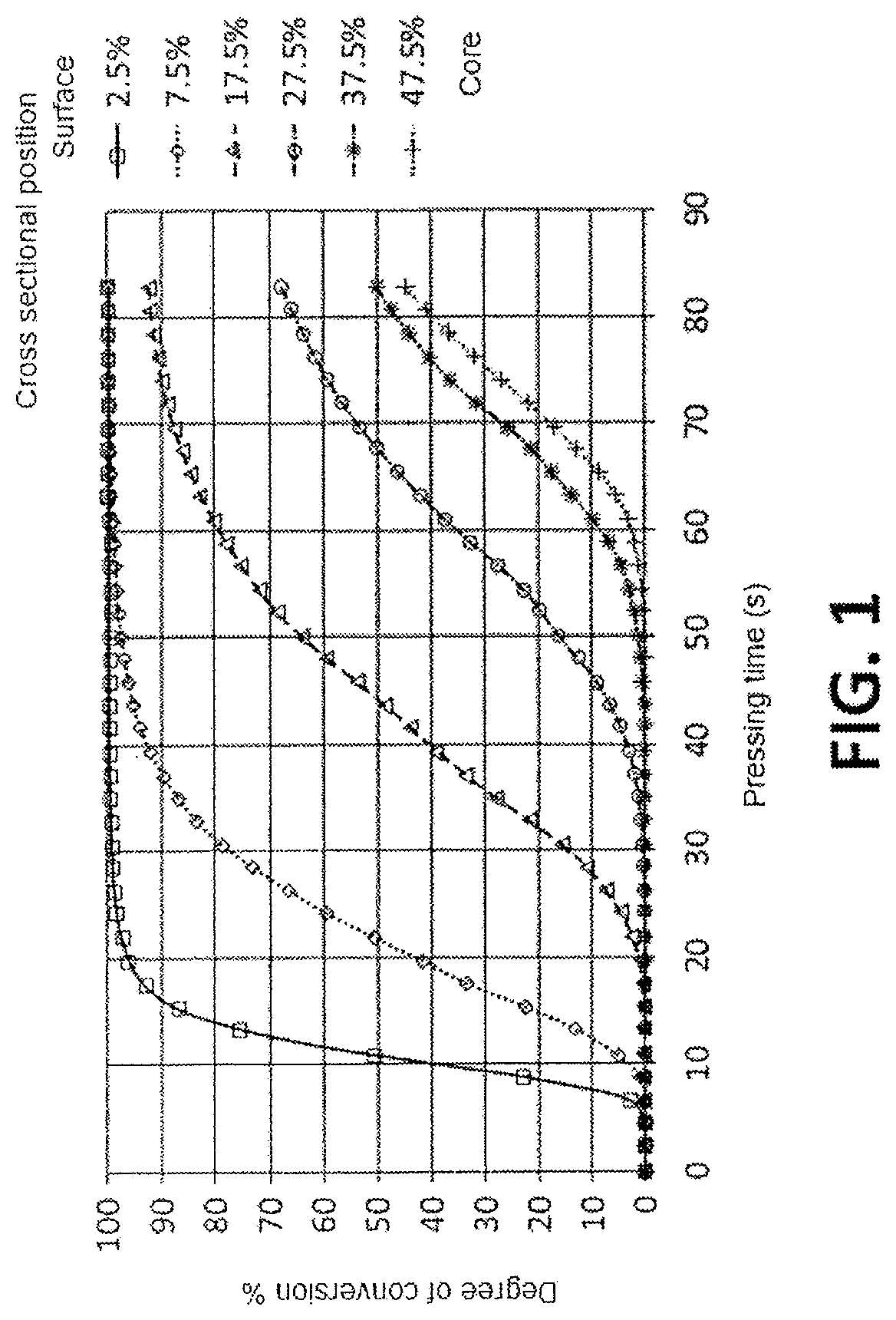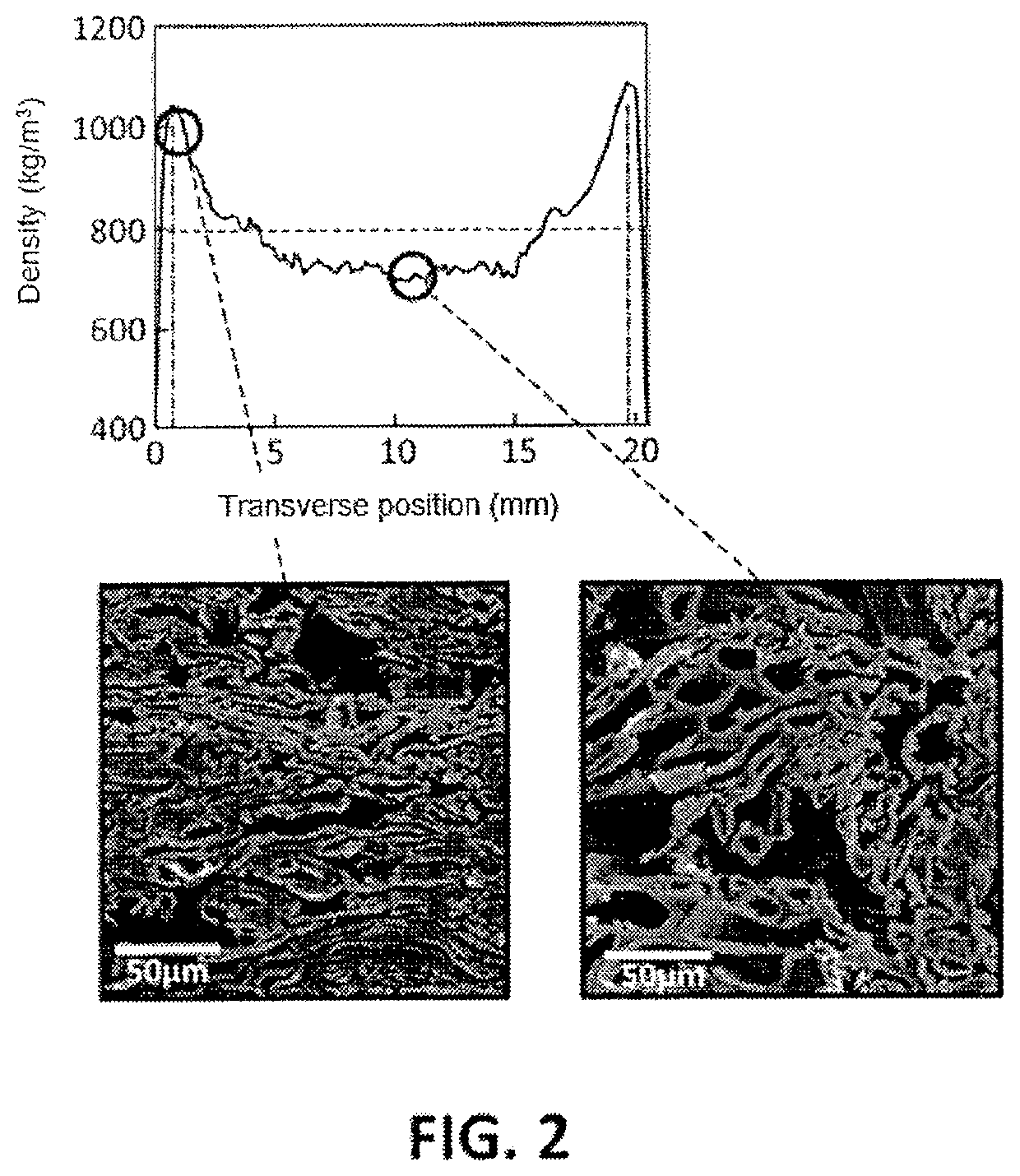Method for the production of multilayer laminated board and resulting board
a multi-layer laminated board and resulting technology, applied in the direction of wood layered products, domestic applications, chemistry apparatus and processes, etc., can solve the problems of significant differences in the thickness/stratum of each layer in the pressing process, the deficiency of wood, and the use of wood, so as to improve the effective use of wood, reduce the size of the resulting board, and add value to raw materials
- Summary
- Abstract
- Description
- Claims
- Application Information
AI Technical Summary
Benefits of technology
Problems solved by technology
Method used
Image
Examples
example 1
ical Board
[0089]A board has been produced according to the method of the invention, formed by 5 layers, the outer faces of which that make up the “Upper fiber” and “Lower fiber” have been made from wood fibers and binder with uncompensated thicknesses in both faces of 4.6 mm and 2.2 mm; the layers closer to the inside are fine particle layers with thicknesses of 3.1 mm and 2.9 mm and even closer to the inside there is a single layer of coarser particles with a thickness of 18.2 mm.
[0090]
UpperLowerUpperouterInnerouterLowerfiberlayerlayerlayerfiberTotaldry kg / m24.782.159.752.242.4621.38layer mm4.63.118.22.92.231density10397005357701118690dry kg / m26.939.754.721.38layer mm7.718.25.131density903535920690
[0091]In the upper part of the table, the layers are considered independently and it is observed how the density of each layer is different, indicating that the densities of the layers of the right side of the table are greater. This calculation was made by following the practice of FIG. ...
example 2
cal Board
[0093]A board has been produced according to the method of the invention, formed by 5 layers, the outer faces of which that make up the “Upper fiber” and “Lower fiber” have been made from wood fibers and binder with compensated thicknesses.
[0094]
UpperLowerUpperouterInnerouterLowerfiberlayerlayerlayerfiberTotaldry kg / m22.021.712.361.72.0219.80layer mm2.112.521.72.62.131density957676570656962639dry kg / m23.7212.363.7219.8layer mm4.621.74.731density804570793639
[0095]In the upper part of the table, it is observed that the layers are considered independently and how the balanced densities are found from the central geometric plane. This calculation was made by following the practice in FIG. 6 in which the layers are considered independently. The three lower rows of the table have been established by considering the grouping of the outer fiber layer and the outer particle layer and considering the central layer. Obviously, in this case it is observed that the density of the groupe...
PUM
| Property | Measurement | Unit |
|---|---|---|
| thicknesses | aaaaa | aaaaa |
| thicknesses | aaaaa | aaaaa |
| thickness | aaaaa | aaaaa |
Abstract
Description
Claims
Application Information
 Login to View More
Login to View More - R&D
- Intellectual Property
- Life Sciences
- Materials
- Tech Scout
- Unparalleled Data Quality
- Higher Quality Content
- 60% Fewer Hallucinations
Browse by: Latest US Patents, China's latest patents, Technical Efficacy Thesaurus, Application Domain, Technology Topic, Popular Technical Reports.
© 2025 PatSnap. All rights reserved.Legal|Privacy policy|Modern Slavery Act Transparency Statement|Sitemap|About US| Contact US: help@patsnap.com



